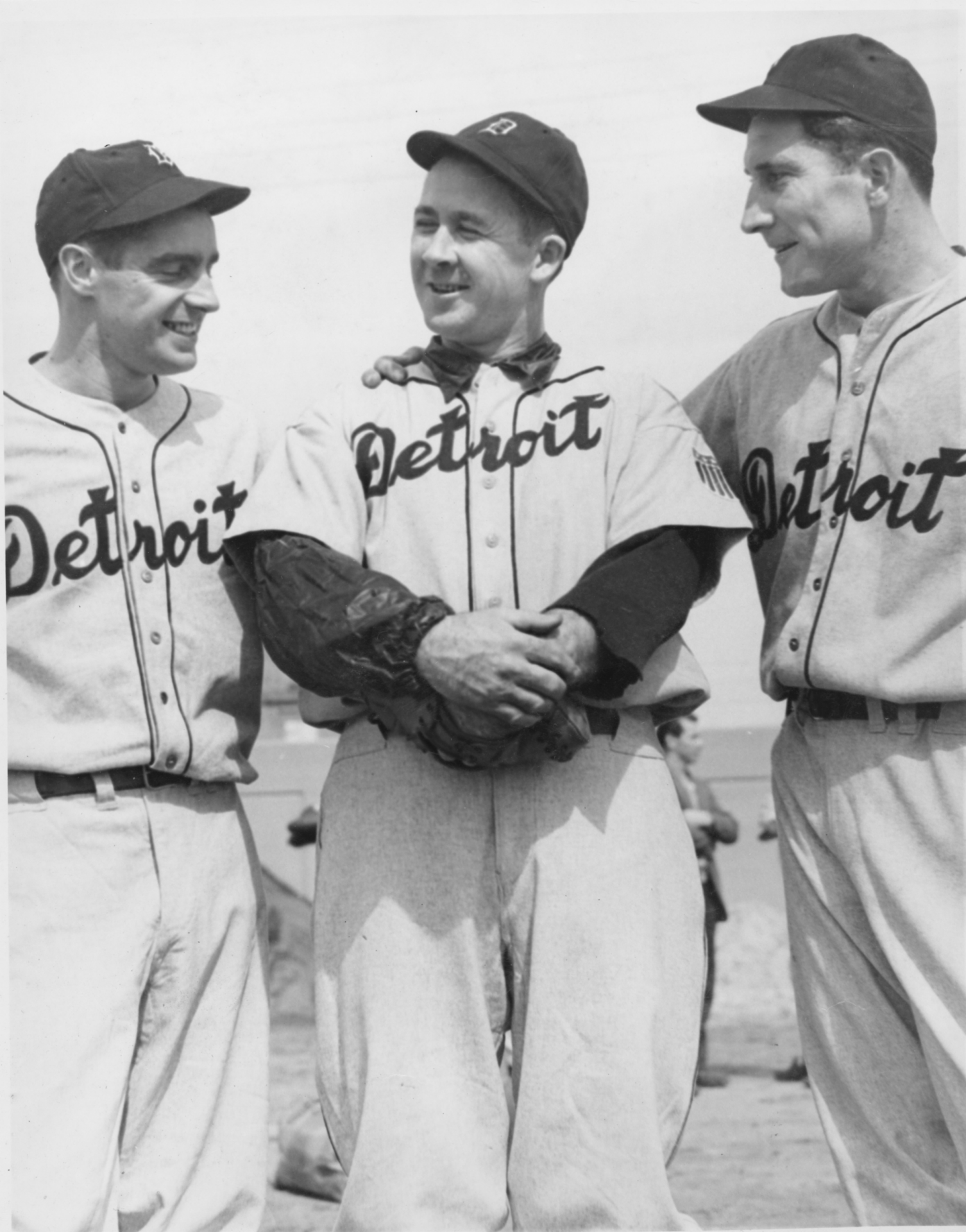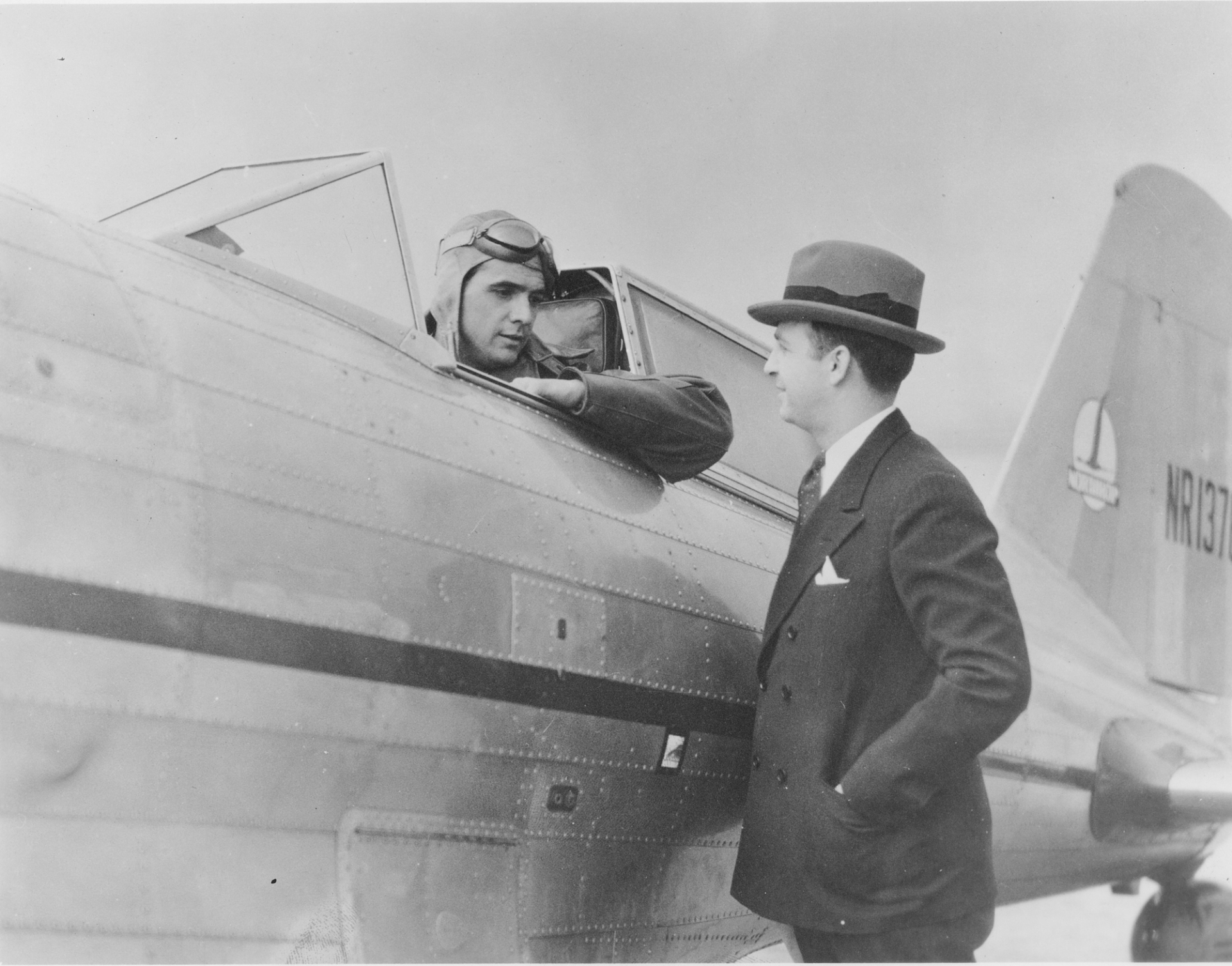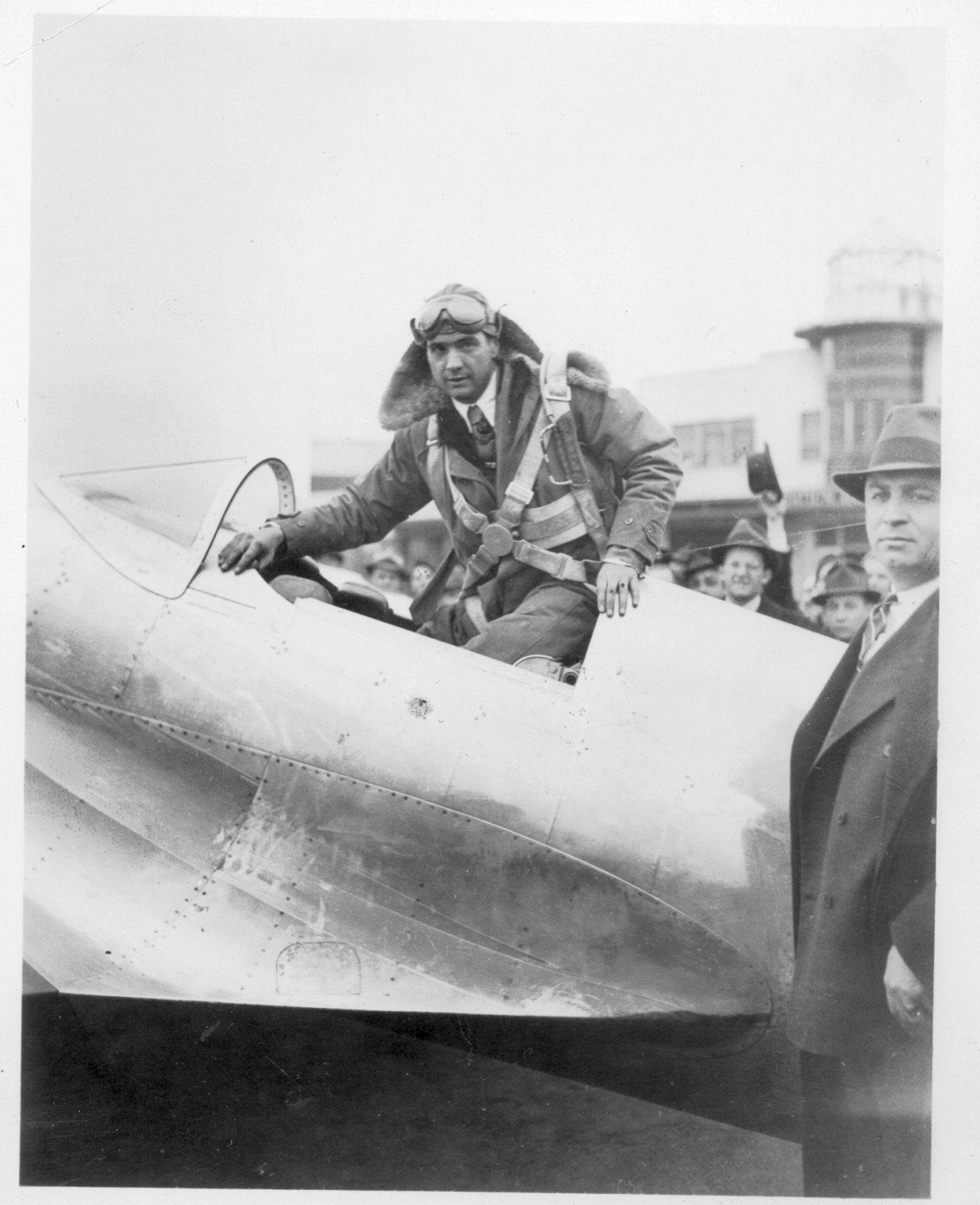It may not be home. But it may run quite close. The Detroit Tigers have shared a Spring Training relationship with Lakeland since 1934. It’s the longest host city relationship in MLB history. While this fact alone contains a treasure of legendary baseball, even its field sits on quite a goldmine of historic measures.
Photography by Philip Pietri | Historical Photos courtesy of The Lakeland Public Libraray
Late in the season of 1938, the Detroit Tigers’ first baseman Hank Greenberg stepped up to bat. Up to this point there wasn’t much question of whether or not Greenberg would hit it out of the park.
Standing six foot four inches, carrying the charm of a Hollywood actor and the swing of an all-star slugger, Greenberg had easily drawn the attention of the public eye. With already 58 home runs that season, he was just two home runs short of Babe Ruth’s season home-run record. Up until that year, Babe Ruth had held an 11-year-old, single-season record of 60 home runs.
In the dawn of the American and National Leagues, Greenberg had become more than just a recognizable ball player. At the ripe age of 19, in 1930 Greenberg debuted in the MLB with the Detroit Tigers. Five years later, Greenberg would be leading in RBIs, home runs, named American League MVP (one of two he would receive in his career), and help bring the Tigers to their first World Series win. Not long after, he would also date (and eventually marry) the famed Caral Gimbel, daughter of department store mogul Bernard F. Gimbel. While not considering himself devoutly religious, Greenberg caught national attention when he refused to play on Yom Kippur, in the midst of a pennant race. He was the first Jewish superstar American sports team player.
Stepping to the plate in the thick of the 1938 season, just two home runs from breaking Babe Ruth’s record, Greenberg was suspiciously sent walking. And before the close of the season, he walked some more. Within the season’s final two months, Greenberg had four three-walk games, more than he would see for the rest of his career. Comparatively, in 1937 he had no three-walk games, only one in 1935, when he won his first MVP, and three in 1940 when he accepted his second MVP.
Until even recent years, many have questioned if pitchers were choosing to intentionally walk Greenberg that season, two home runs shy of beating the great Babe Ruth. While the answers may forever remain unknown, Greenberg’s story still echoes in the halls of the Detroit Tigers’ Florida offices, shared by the likes of Tigers Director of Florida Operations, Ron Myers, who tells the rich history of a Major League team that somehow found its way to Lakeland.
Regardless of any historic ball-game hoax, Greenberg would come to be a baseball Hall of Famer the Detroit Tigers would treasure as one of the many walking legends to step onto what is known today as Tiger Town USA.

TIGER TOWN USA
The Detroit Tigers have trained in Lakeland since 1934. No MLB team has had a Spring Training relationship with a host city longer than the Tigers have held with Lakeland. Since their arrival in 1934 (with the exception of 1942-1945 during World War II), the American League Detroit Tigers have arrived to the city each spring, bringing with them Mickey Cochrane; Charlie Gehringer; Willie Horton; Al Kaline; Hal Newhouser; Larry Doby; Mark Fidrych; Justin Verlander; Miguel Cabrera; and fresh to the Hall of Fame in 2018, Jack Morris and Alan Trammell, to name just a few of the pros who have played on the team.
The Cleveland Indians were the first MLB team to train in the city. Training at Henley Field, they arrived in 1923 and left in 1927. From 1928 to 1933 there was no team in Lakeland. Considering the economic loss of a training MLB team, the city began to seek out a replacement. It would quickly find another team to call Lakeland their training home, maybe for longer than anyone could have anticipated.
In 1933, the Detroit Tigers agreed to come and spring train based on a one-year contract. By the next year, a ground crew of city workers were sent from Detroit to prepare the fields, investing $8,000 in Henley Field. That next early spring, the Detroit Tigers team would arrive, train, and leave for the regular season with no guarantee of their return the following spring.

“[Clare] Henley (of Henley field) was highly involved in getting the team to come back. He did the parking and concessions, on top of his pharmacy business,” recalls Myers. “Henley had owned Magnolia Pharmacy and several pharmacies throughout Lakeland.” Also president of the Lakeland Baseball Club, in 1922 Henley was the original contact with T.J. Appleyard and offered Lakeland to be a host city to Cleveland. Henley would sell tickets out of his pharmacies, so when Cleveland left he was eager to bring a stable team to town.
The Detroit Tigers gave the city 30 days and then would confirm if they would return or not. For another 37 years, the team would continue to train in Lakeland under a one-year contract. The team would arrive in spring, train, leave, and the city would be on pins and needles a month before the team would confirm their return. It wasn’t until 1971, when Tiger Town brought in the addition of a 78-room dormitory that the Tigers signed a 10-year contract with the city of Lakeland, the first to extend beyond one year.
In 2014, the Tigers signed on to train in Lakeland for 20 more years. This agreement will mark a 100-year Spring Training relationship for the city and team by 2036, unprecedented in the MLB. Negotiations took over two years to settle the agreement, with no small commitment. The deal called for $47 million in upgrades to Joker Marchant Stadium for both the Major League and Minor League clubhouses.
In the spring of 2017, the Detroit Tigers’ winter home was given a major uplift and revealed as the newly christened Publix Field at Joker Marchant Stadium. While much of the new facilities and installments are enough to draw in a crowd, the past upon which the clubhouse is built (quite literally) is one of pure historic marvel.
FLYING TIGERS & THE WRIGHT FLYER
In 1930, the Lodwick Field was built as Lakeland’s municipal airport, replacing Haldeman-Elder Field to meet the city’s growing transportation needs. With two paved runways, one north-south strip of 2,456 feet, and an east-west one of 2,475 feet, the city premiered its first regular commercial airline service when National Airlines began flying its Lodestar planes in 1937.
Nearing World War II, Albert Lodwick, president of Stinson Aircraft Company, had been recruited by Howard Hughes to manage his upcoming around-the-world flight in 1938. “So he does it,” says Myers, “in three days, 19 hours, and 17 minutes. In the meantime, he’s [Lodwick] traveling the country and gets a tip that we were training only 500 pilots a year. Roosevelt wanted us to get up to 30,000. So he wanted to open up cadet schools, teach men how to fly, financed by the army and run by civilians.”

Lodwick initially purchased an airplane school in Lincoln, Nebraska, but quickly found it unfit to operate year-round due to weather. “So he moves the school here (in Lakeland), The Albert Lodwick School of Aviation,” says Myers. “And then the generals give him the deal. He’s the first one to open and the last one to close. And Jimmy Dolittle, the general, came here all the time. This was the beginning of the Air Force.”
Lodwick School of Aeronautics helped employ over 400 locals throughout the time of World War II,
and Lodwick’s transition to Lakeland was the school’s success. Soon Lodwick had a house on Lake Hollingsworth. He became close with many in the Chamber of Commerce and could be spotted a mile away, dressed in his stately white suits.
In 1946, after World War II, the Tigers returned as World Champions and continued to train on a one-year basis. By 1953 they had expanded their training facilities and complex over part of the Lodwick airport. For several years it remained the principal airport, but gradually the training complex developed over Lodwick Aircraft facilities. By 1960 the airport was closed.

The Detroit Tigers would continue to renovate the Lodwick station as their clubhouse through the years, but hit somewhat of a landmine in 1962. “There was a big safe in the middle of the room,” Myers says, “so big, and no one knew the combination. It just sat there and we’d walk around it. When we had to tear the building down, we had to get the safe out of here. So we brought the safe out, found a safe-cracker, cracked it, and found Albert Lodwick’s complete collection of photographs, in order — day by day, month by month — all the pictures of the runway, his correspondence with Howard Hughes, handwritten notes, and correspondence between him and the Wright brothers, and a piece of [the Flyer, the Wright brothers original plane].” The letters and section of the Flyer are now held in Sun ‘n Fun’s space museum, and Lodwick’s photographs are a part of the special collection in the Lakeland Public Library.
As the Lakeland Flying Tigers team was in development in 2006, a name was already easily decided. “We called it the Flying Tigers because of the airport and the history of aviation,” says Myers.
The Tigers continue to honor and conserve Lodwick’s historic contribution and School of Aeronautics, with the Flying Tigers. The only professional team of any sport named after a military squadron. Airplane and military numbers take the place of uniform numbers. “Our manager is not our manager,” notes Myers, “he’s our commander. In the old days, Minor League players used to have to walk across the runway, where we had trained over 8,000 pilots.” While Minor League players still have a daunting walk to the big leagues, the runway has been replaced by the revived stadium, yet maintains the memory of Lodwick’s school. Alongside right field of the stadium is a larger area with clear white point marks, named “The Runway.” Built on top of the former Lodwick Field airstrip, it provides fans a 360-degree view of the field.
Even The Flying Tigers’ name and colors pay homage to the Lakeland Lodwick School of Aeronautics, with its orange plane and teeth. “So it became a destination,” says Myers, “Tiger Town USA.”
THE FRESH GREENS
Since the establishment of Publix Field at Joker Marchant Stadium, the improved technology has widely enhanced the game-day experience. The new field includes an LED HD video display and scoreboard. Beneath the scoreboard in left field sits the Berm Bar, with seating, picnic tables, and a ticketed 120-foot drink rail. Along the Berm is a playground centered around a Tiger bounce house for kids to enjoy during games.
The newly renovated Detroit Tigers’ and Minor League clubhouses are outfitted with some of today’s most advanced treatment and rehabilitative modalities offered, allowing Tiger Town to be a year-round rehabilitation and training facility for Major and Minor League players.
One field, replaced with artificial turf, is now suitable after rain storms and allows for year-round activity. New practice mounds and a 9,000 square-foot, air-conditioned batting cage have also been constructed.

But Tiger Town doesn’t only avail the field and enhanced facilities for their Major and Minor Leagues alone. The Tigers Florida Operations have paved the way for camps and teams to use the brand facilities throughout off-season. A Tigers Fantasy Camp is hosted at the start of each year, allowing guests to improve their game alongside some of the Tigers’ very own. Featuring many of Tigers’ World Series champs (such as Al Kaline and Mickey Lolich) as well as additional former Tigers players, guests from ages 21 to 83 join for a week of coaching, training, games, complete with a playoff series and championship.
This year, the grounds also held a Spring Training for The Wounded Warriors Amputee Softball team. Active-duty military personnel and veterans with amputations participated for a week of training to potentially join the Wounded Warriors Team.

As far as the Detroit Tigers are concerned, their facilities are best used when instilling the game of baseball throughout the year, whether it’s for a world-class athlete or simply a boy with the dream.
Babe Ruth’s home-run record wouldn’t be broken until 1961 — by Roger Maris of the New York Yankees, no less. Hank Greenberg may forever be due the many home runs he was shorted that season in 1938. But walking past the Tigers’ offices, with historic photos of Greenberg and his fellow teammates lining the hall, it’s clear their legends spur the team on still.
